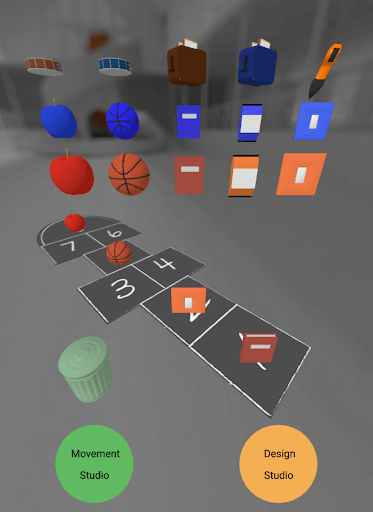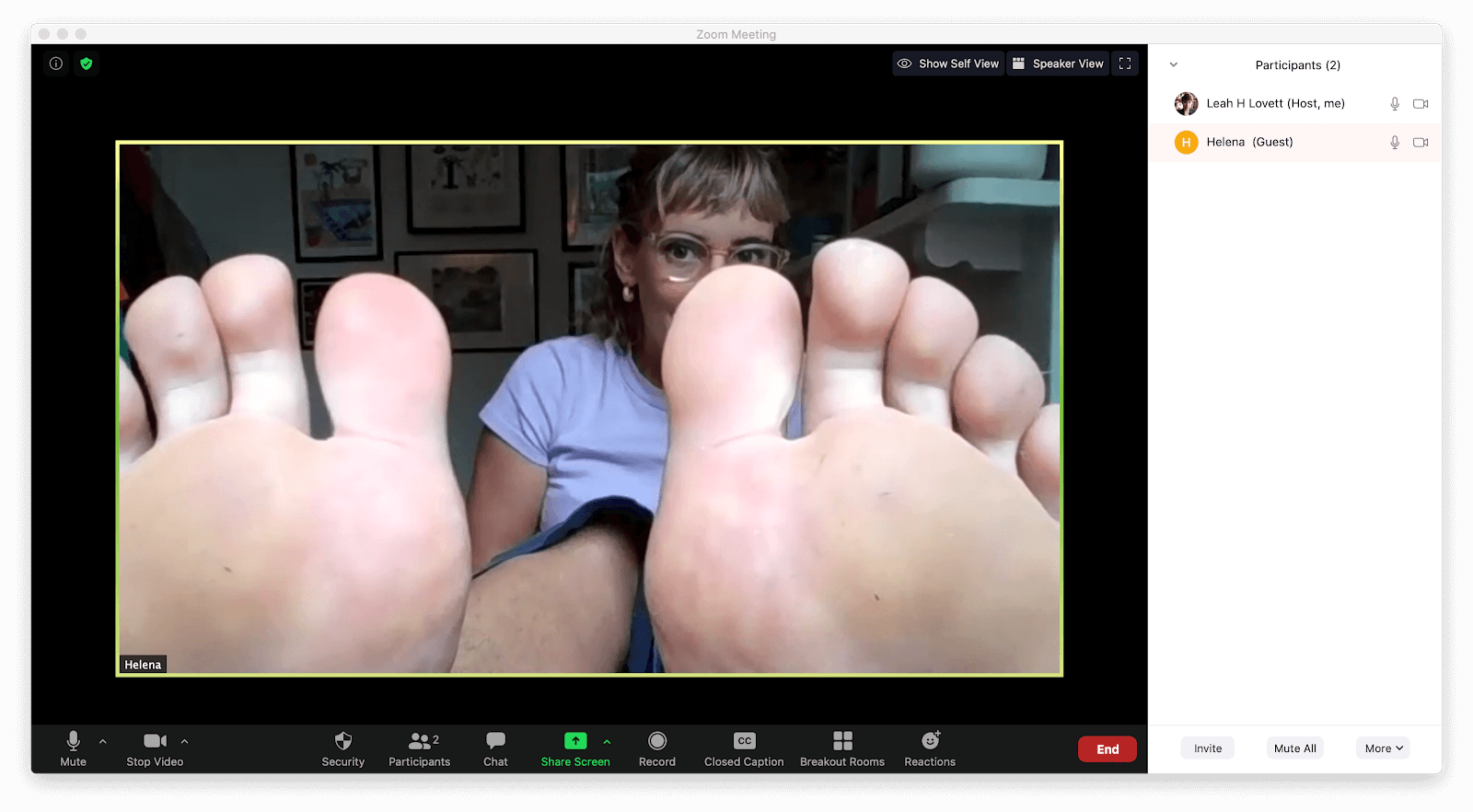Learning through doing co-creation online: RE-Invent Digital Pilot
Leah Lovett, Helena Rice, Valerio SignorelliApril 5, 2021 | Projects
During the pandemic, researchers from UCL’s Connected Environments Lab at the Bartlett Centre of Advanced Spatial Analysis joined together with creative producers at the Victoria and Albert Museum of Childhood for the online knowledge exchange project, RE-Invent Digital Pilot. Together with artists, young people (11-14) and youth workers, the team co-created a series of interactive, web-based virtual reality (VR) studios to creatively engage young people during lockdown. With the museum building in Bethnal Green, London closed for a major transformation project, RE-Invent Digital Pilot focused on movement, design and sound to reflect the planned organisation of the new museum galleries. Funded by the UCL Public Engagement Team through their Listen and Respond initiative, the artists commissioned for the project were Kristi Minchin, Marawa Ibrahim and Dan Mayfield of School of Noise.

Prototype hopscotch sample machine for the Sound Studio, School of Noise with young people from Spotlight, RE-Invent Digital Pilot, 2020.
Overcoming barriers to digital engagement
The online delivery of RE-Invent Digital Pilot came about as a direct response to the pandemic and the first UK lockdown (March 2020). Connected Environments had been invited to present as part of the RE-Invent Festival planned to take place at the Museum of Childhood in May 2020. With the closure of schools, universities and cultural organisations due to Covid-19, we began to discuss the possibility of reimagining this engagement activity as a digital offering for the V&A’s ‘reach’ audience of 11-14 year olds.
We were conscious of the multiple potential barriers to engaging 11-14 year olds online. While 92% of households in the London Borough of Tower Hamlets have internet access, young people in this age group may not have use of a dedicated device. One of the main ways we attempted to overcome this issue was through partnering with two Tower Hamlets youth organisations, Spotlight and Leaders in Community. The youth workers supported participation, including working with us to ensure disability and access needs were met, and they acted as the main point of contact for communications between the young people and the project team.
Another challenge was around sustaining participation for the duration of the project, particularly amidst the uncertainty of the pandemic. RE-Invent Digital Pilot took place over several months (from April-October 2020), with welcome sessions, six creative workshops (two facilitated by each of the three project artists), beta testing sessions and a launch event. A total of 19 young people, youth workers, creative producers and researchers joined these sessions, but there could be as few as two young people on any single call, and one workshop had to be rescheduled due to non-attendance. Maintaining the momentum of the project required us to be flexible in how we imagined and invited participation.
Novel uses for familiar platforms
The RE-Invent Digital app was developed using open sourced, web-based digital tools to facilitate rapid prototyping and accessibility across multiple devices. However, the workshops that enabled us to collaboratively develop the app took place using Zoom, as the chosen platform of the partner youth organisations and young people.
There are safeguarding issues that arise from Zoom as a digital portal into participants’ homes, specifically around respecting the rights of participants’ right to privacy. A typical response to this problem is for participants to keep their cameras and microphones switched off. However, participants being present without being visible or heard can close off visually codified means of communication, and therefore potentially access to arts-based sessions. The blank screens may also pose a difficulty to facilitators who are used to ‘reading the room’ during a process in assessing whether and how their ideas are landing. There are no straightforward answers to these issues, but creating a respectful environment and using chat as a way to check in can help the group to build trust over time.
Another, practical challenge in using Zoom as a collaborative tool is that it tends to encourage more sedentary modes of engagement. Creative workshops with children are usually highly active, especially when working with movement-based practices. The workshops delivered as part of RE-Invent Digital included movement (Marawa Ibrahim), sculpture (Kristi Minchin), and sound recording (Dan Mayfield/School of Noise). Dan found ways to record sounds through Zoom and create new audio materials live in the call. Marawa invited us to move, and memorably at one point to remove our shoes and socks and bring our toes into frame. We were initially hesitant about making people feel uncomfortable, but the group was surprisingly open to the experience, perhaps reflecting a desire for new and embodied forms of engagement in the landscape of completely digitised learning. Kristi’s session asked us to use objects from around the home to create something new, to look harder at those things and seek inspiration from them. These moments of direct, movement-based interaction actively enabled a process of co-creation to begin.

Screenshot from movement workshop by Marawa Ibrahim (young people not shown for reasons of safeguarding), 2020.
Reflections on co-creation
RE-Invent Digital Pilot invited collaboration from artist-practitioners during a period when many creative opportunities were disappearing due to the pandemic. The project became an experimental space for the commissioned artists to adapt their practice to digital engagement with audiences.
“This has been a solid process of that – workshopping then executing it right through to the end…Like the blue-print of how these things can work, and how we can apply our skills and share them differently online.” Marawa
Our starting position was that every participant had a meaningful contribution to make in developing RE-Invent Digital, and that our role as researchers and producers was to listen.
“Making them [the young people] part of the process was crucial to it, not tokenistic. For me, making something, having time to see a project all the way through felt important. So often, I’m just doing the one hour workshop thing and then leaving. This was a chance to concentrate on one thing and then finish it and now it’s a tool people can use.” Dan
When we shared the beta version of the app with the young people, they had many ideas on how we could grow and alter the platform. These ranged from granular, functional changes, to adding ongoing updates to keep users engaged. Above all, their feedback reflected the power of co-creation as a model for witnessing the impact of one’s contributions:
“I learnt how to make ideas into a reality.”
“I learnt that contributing is a big thing.”
Final thoughts
The RE-Invent Digital Pilot project showed us that a sense of community can form remotely. The project provided participants with a shared purpose, despite the multiple barriers to digital engagement and participation during a health crisis. We found the young people who participated were also seeking opportunities for connecting with peers. While in many ways an imperfect tool, Zoom provided a space for meaningful conversations between the young participants, researchers, producers and youth workers to occur. The group’s shared identity was strengthened through the creation of the role of Young Ambassador for the V&A Museum of Childhood. As Young Ambassadors, the participants will continue to contribute to the development of the reimagined V&A Museum of Childhood, building on the discoveries from the RE-Invent Digital project. As researchers and creative producers, we have tested the limits and opportunities for iterative co-creation remote from participants and the space we are exploring, an entirely new process for all of us.
______________________________________________________________________________________
About the authors
Leah Lovett is an artist and research fellow in Connected Environments at the Bartlett Centre for Advanced Spatial Analysis, UCL. An experienced collaborative and social arts practitioner, her research explores the potential for using digital technologies to co-create performances and interactive experiences aimed at social and environmental justice. She holds a PhD from the Slade School of Fine Art with a thesis investigating Augusto Boal’s development of Invisible Theatre as a model of urban performance.
Helena Rice is Senior Creative Producer at the V&A Museum of Childhood on the Creative Team developing the new galleries and learning programmes for the transformed museum in Bethnal Green. She is an experienced participatory arts practitioner and has worked across education, health care, museum and arts settings.
Valerio Signorelli is an Architect by training and Lecturer in Connected Environments at the Bartlett Centre for Advanced Spatial Analysis, University College London. His research focuses on the notion and role of interface between digital and physical urban environments, considering their temporal, spatial and sensory dimensions. He is interested in understanding to what extent visual and auditory modalities, in spatial computing technologies, allow us to describe and better understand our living places.
This post is abridged and republished courtesy of UCL East. Click here for the original article.
Published: 04/05/2021
